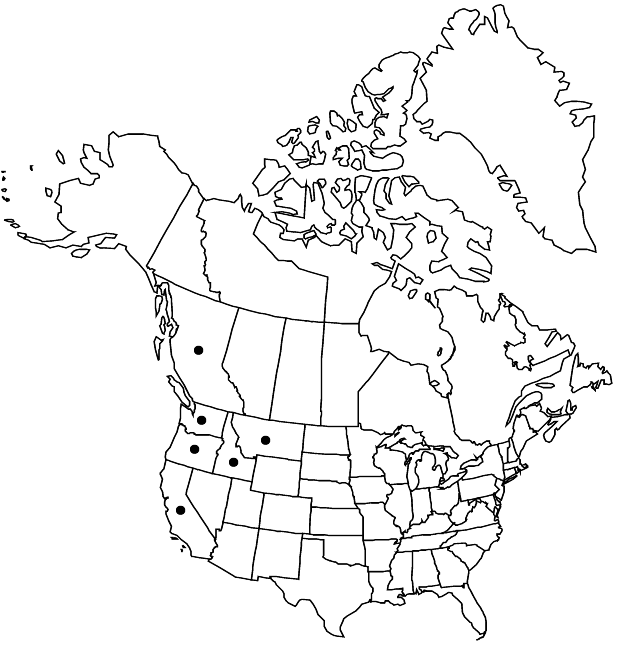Mitella caulescens
in J. Torrey and A. Gray, Fl. N. Amer. 1: 586. 1840 ,.
Plants usually stoloniferous. Flowering-stems 13–45 cm. Leaves: petiole 1.5–14 cm, short-stipitate-glandular and, usually, long-stipitate-glandular, longer hairs spreading to retrorse, white; blade broadly cordate to broadly ovate, ± as long as wide, 1.2–6.5 (–8.5) × 1.4–7 (–8.2) cm, margins 3-lobed, 5-lobed, or 7-lobed, crenate-dentate, irregularly ciliate, apex of terminal lobe acute to obtuse, surfaces short-stipitate-glandular and sparsely long-stipitate-glandular; cauline leaves 1–3, proximal or mid cauline, alternate, sessile or petiolate, blade 0.3–4.3 (–6) × 0.4–4.4 (–7) cm. Inflorescences 1–2 (–4), remotely 5–25-flowered, 1 (–2) flowers per node, (anthesis basipetalous), not secund, 13–45 cm, short-stipitate-glandular and sparsely long-stipitate-glandular proximally, short-stipitate-glandular distally. Pedicels 2–8 mm, short-stipitate-glandular. Flowers: hypanthium broadly campanulate, 1.5–2 × 3–5.5 mm; sepals spreading or recurved, greenish, deltate-ovate, 0.9–1.5 × 1.4–2 mm; petals whitish green or greenish, sometimes purple-tinged proximally, 5–9-lobed, 3–4 mm, lobes linear, lateral lobes spreading; stamens 5, opposite sepals; filaments usually purple proximally and white distally, sometimes entirely white, 0.6–0.9 mm; anthers 0.2–0.4 × 0.2–0.4 mm; ovary 1/2 inferior; styles erect or spreading, cylindric, 0.8–1.1 mm; stigmas unlobed. Seeds reddish purple or dark reddish-brown, 0.7–1 mm, pitted. 2n = 14.
Phenology: Flowering Apr–Jul.
Habitat: Deep woods, meadows, stream banks
Elevation: 0-2100 m
Distribution

B.C., Calif., Idaho, Mont., Oreg., Wash.
Discussion
Selected References
None.
Lower Taxa
"full" is not a number.